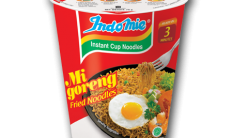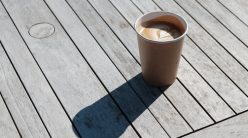From practical to goofy, American inventors vie for a cool million
The State
By MATT HURWITZ
For The Associated Press
Who knew we all needed the “Bladder Buddy� After all, being able to go in public without anybody’s knowing what you’re doing under that plastic garment bag might come in handy someday.
NOT, say the four judges on Simon Cowell’s latest competitive concoction, “American Inventor,†which will premiere with a two-hour special at 8 tonight on WOLO-17, cable channel 5.
The show highlights some of the country’s brightest and most inventive minds — as well as some of the nuttier variety — in a search for the next “it†gadget. Contestants will vie for a $1 million prize and the chance to have their inventions end up in homes across the land.
“It’s everything I love about reality shows, which is the good, the weird and the completely and utterly disillusioned,†Cowell says.
The brutally frank judge from Fox’s “American Idol†is an executive producer of the new show but does not appear in the series. He helped develop “Inventor†after being approached by British business executive Peter Jones, one of four judges.
Similar to its musical sister, with the talented to the ludicrous petitioning a panel of judges to continue to the next step, “American Inventor†actually is more akin to “Idol’s†British counterpart, “The X Factor.â€
In that series, the judges counsel the contestants before the winner is determined. “Inventor†takes the same route.
“That process works very well, in that you’ve got a very clear A-to-Z path,†Cowell explains. “But you’ve also got a sense of responsibility from the judges, who actually try to help the contestants.â€
As with “Idol,†“Inventor†begins with a set of cattle-call auditions in seven cities, with about 10,000 would-be inventors responding. Several hundred contestants are selected, and over the first four episodes of the show, they present their proposed products to the judges.
Besides Jones, the panel includes ad agency executive Ed Evangelista; Mary Lou Quinlan, whose business focuses on products for women; and inventor Doug Hall, who more typically deals with Fortune 500 companies.
“This is not the world I live in, but it’s been a real roller-coaster ride,†Hall says.
Hall notes that of the four, he might be the “Simon†of the group, but Cowell himself says, “No one’s trying to be (harsh) for the sake of being (harsh), which often happens on these shows.â€
Easier said than done when it comes to some of the goofier products paraded past the panel. Besides dental hygienist Hector Ortega’s “Bladder Buddy,†consider the “Video Tattoo,†which embeds a video screen in clothing, or one contestant’s pitch for clothing for cars.
Then we have John Tang, clad in a beetle-inspired space suit, offering the “Space Beetle Utopia,†a would-be amusement park for insects, complete with a “bowling alley.†Tang suggests his contraption is the successor to the ant farm, but Evangelista responds, “I see the nut farm here.â€
“They’re absolutely serious about these things,†Cowell says with a laugh.
On the more practical side, there are inventors like 18-year-old Colombian student Francisco Bettino, who has created a bicycle with pedals up front for a passenger who rides atop the handlebars. And handyman Mark Martinez, whose simple “Sackmaster†neatly and quickly fills sandbags for residents of flood-prone regions.
“Under normal circumstances, you’d think, ‘Well, who’s interested in a sandbagger?’ †Cowell points out. “But the world has changed — just look at New Orleans — and you find yourself saying, ‘Actually, this isn’t just a shovel that makes sandbags, it’s something that could potentially save lives.’ â€
Indeed, the judges are looking for products that will, in fact, make a difference, and, more important, make a sale.
“The challenge is, when it gets out into the marketplace, will anybody ever buy it?†Hall says.
When judging an invention, Hall says he first looks to see whether the product really provides something new, or just slightly change things already on the market.
“The show is called ‘American Inventor,’ not ‘American Incremental Improvement,’ †he reminds.
The judges narrow the field 50 contestants, who, in the show’s fifth episode, get one minute each to pitch their products to the judges again. The top 24 get five more minutes each to explain how they would use $50,000 to develop their products, with the top dozen of those actually getting that reward.
Then, over the following four episodes, the judges will take three contestants each through the process of developing their inventions into real, viable products. Each judge then will choose the best one of his or her lot as a semifinalist.
“Many of these people aren’t technical, they’re just ordinary people with an idea,†Hall explains. “I get people at Cal Tech and UCLA to help validate what they’re proposing, to give them credibility.â€
Finally, each of the four finalists will create a commercial to sell the idea to viewers, who then will vote on the winner.
What makes “American Inventor†compelling “is not just the inventions but the people behind them,†Cowell says.
“Ninety-five percent of the people who turned up are not part time at this,†he says. “They’re not playing. They’ve literally put their lives, homes, whatever, on the line for this one product.â€
INVENTIONS WE’D LIKE TO SEE
• Gamecock time-travel clock: So we can turn back time just enough to get another chance to win the game.
• Bizarro Simon Cowell clone: He’s nice and he doesn’t wear black!
• Portable dehumidifier: Attach it to a hat, and you, too, could tolerate South Carolina summers.





